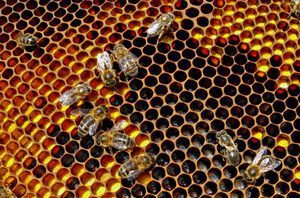Last week, PAN UK released a report on pesticide residues in bread, analyzing government data over a 13-year time span. The report highlights extensive pesticide residues in some foods — including two-thirds of all bread products — and the ways in which food residue trends have shifted over time.
Pesticide residues have been in our food as long as we’ve been using pesticides. So it's not surprising (although still disturbing) that residues have significantly increased over the past decade. PAN UK’s analysis indicates that pesticide residues in bread alone have more than doubled from 28% in 2001 to 63% in 2013; and the number of samples testing positive for multiple residues have also more than doubled in the last seven years.
These data support what we might expect because the more we use pesticides, the more likely we are to see residuals in our food, air and water. Glyphosate, the active ingredient in Monsanto's RoundUp, was the most prominently found residue in the report. In the U.S. its use increased by 527 million pounds from 1996 to 2011.
The full risk posed by this increased use of pesticides is not entirely understood. As noted before in GroundTruth, many pesticides are put on the market before their impact on health and ecosystems is fully understood. We know that some pesticides have serious health impacts on children, we know some persist in the environment, and we continue to discover strong links between exposure and a variety of health harms like increased risk of Alzheimer's and certain cancers. And still, scientists are unearthing additional ramifications of pesticide exposure.
It is long past time for our regulatory process to fully assess the breadth of potential impacts from pesticide exposure, including:
- Cumulative effects: Pesticides can have a cumulative "toxic loading" effect both in the immediate and long term, and each person accumulates and responds to chemicals in a unique way.
- Synergistic effects: Interacting chemicals can have synergistic effects, even at very low levels — and little research has been done on the impact of the "chemical cocktail" on human and ecosystem health.
- Systemic pesticides: In 2013, after reviewing independent studies on the subject, the European Food Safety Authority determined that “important uncertainties” still exist about the impact of systemic, neonicotinoid insecticides. And current standards “may not be protective enough for the possible developmental neurotoxicity” of commonly used neonics. As a result, the European Union placed a two-year moratorium on use of these chemicals, while U.S. decisionmakers won't complete their review of neonics until 2018.
To learn more about pesticide residues on food and their potential impacts, visit whatsonmyfood.org. Want to get more engaged? Sign up for future opportunities to take action towards creating a food system that is safe for us all, from field to fork.







